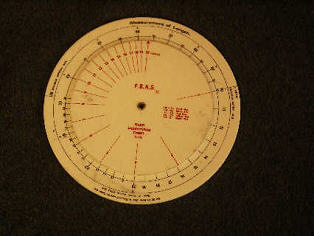FISH SHOWS - WHAT ARE THEY ALL ABOUT?

Like all pet interests, fishkeeping has its competitive side where proud owners vie with each other to see who has got the best pet (in the Judges' eyes, anyway!)
Of course, everyone will have their own favourites - even amongst all the other entries than their own - so how are the results arrived at?
There are certain analogies with all other pet Shows too where the entries are divided up into separate Classes rather than every entry being lined up against every other one. This rules out the situation where a tiny fish is compared to a huge opponent, for example, to a certain degree.
The Classes are generally based on groups of fishes - Egglaying species are separate from Livebearing species for a start - with most Shows having a total of at least 20 basic Classes. With due permission from the hobby's governing bodies, these Classes may be sub-divided if necessary, where a Society thinks interest in any particular group of fishes merits such a division. But how can a Judge compare, say, a Guppy with a Gourami?
Fortunately, such 'personality clashes' are taken out of the equation by simply evaluating each fish against an 'ideal' set of specifications, rather than against those in its own Class. This where the famous 'Five 20s' comes in.
THE FIVE 20s
A maximum of 20 points are available to be awarded in five categories for each single fish, totalling up to the magic '100' for the perfect fish..
SIZE - The actual size of the fish is measured and compared to the ideal size (for a mature species) as laid down by the governing bodies' Size Sheets (these are updated each year, to reflect changes achieved - or not - by exhibitors).
 There is no argument about 'Size' as it is measured by a unique Reflecting Ruler which allows 'easy-read-off' of a fish's actual size whilst it is in the tank. Holding the Ruler up to the front glass makes the reversed size figures appear normal when compared, and lined up, against the fish's position in the tank.
There is no argument about 'Size' as it is measured by a unique Reflecting Ruler which allows 'easy-read-off' of a fish's actual size whilst it is in the tank. Holding the Ruler up to the front glass makes the reversed size figures appear normal when compared, and lined up, against the fish's position in the tank.
However, points are not awarded proportionately but designed to reward the effort in presenting a fish at its maximum size. Anyone can exhibit a half-grown fish but adding those final extra centimetres takes more work!
 Fortunately, Judges don't need to be mathematical geniuses to do the sums, a handy calculator-disc does the work for them. Roughly, a half-grown fish would get 7 points, a three-quarter size 13 with only the maximum size (and over) attracting the top 20.
Fortunately, Judges don't need to be mathematical geniuses to do the sums, a handy calculator-disc does the work for them. Roughly, a half-grown fish would get 7 points, a three-quarter size 13 with only the maximum size (and over) attracting the top 20.
BODY - The body should be the correct shape for the species and be free from any deformities.
Where the fish has been aquarium-cultivated - as opposed to a wild-caught fish - any deliberately in-bred body features must again conform to the Standards recommended for that particular strain.
COLOUR - This must be that which is expected of the species. Colour should be clear and intense.
Again, any colours expected in aquarium-cultivated strains must conform to the Standard. Also, importantly, is that the fish must all be judged under the same lighting conditions.
FINNAGE - All fins are present (although some fish do not necessarily all have the same number) and are in balance both with each other and the fish. The fins should be in keeping with the species, with no ray malformation present. Again, cultivated strains must conform to the required finnage Standard. Where fins are split or damaged, this fact must be detrimentally assessed under the following 'Condition & Deportment' section not here.
CONDITION
& DEPORTMENT - The overall condition of the fish, and its deportment. It must be free from damage, disease. The nature of the fish will be considered, that it is fearless, appears well-cared for and nourished. It should move well and present itself as in nature (not all species are up and swimming all the time) and that it can be viewed with ease for judging.
Under some pointing systems, points are awarded for 'Presentation' where a smartly turned out fish and aquarium (clean glass, clear water etc) would obviously be rewarded with more points than a fish in a grubby tank filled with murky water.
Obviously, the fish with the most points wins its Class but, taking events on a stage further, when all Class winners are being evaluated for the 'Best in Show' Award it's not necessarily the highest-pointed fish which wins; some Judges may be mean with their points, others (only a rumour?) might be over-generous. In this situation, a number of Judges get together to collectively assess the merits of all Class winners before choosing the top fish. This democratic method also helps to cancel out any personal species favouritism too, Judges are only human after all!
The above notes only give a general overview of exhibiting single fish.
The normal Society Open Show will also have Classes for Pairs of Fishes, Breeders' Teams, Aquatic Plants, Furnished Aquariums and Aquascapes too. Because of their slightly different natures and compositions, these Classes will have their own sets of Standards that must be taken into consideration.
FISH WELFARE
All Societies appoint Stewards to oversee the well-being of fishes on their Showbenches.
Most exhibitors recognise the value of taking their own aquarium water to the Show so that their entries are not stressed (and so start at a disadvantage to the local entries) by being introduced into unfamiliar water conditions. It is usual for the host Society to display a notice relinquishing responsibility for fishes not benched in suitable water conditions.
In the unfortunate situation of an exhibited fish showing signs of stress or disease, a separate treatment area is set aside where such exhibits can be dealt with.
In recent Shows, it is now becoming acceptable that large fish can be exhibited in aquariums fitted with inbuilt filtration systems to preserve water quality.